(!) Since support from Microsoft will end on January 14th, 2020, Windows 7 will be excluded from the recommended environment from December 15th, 2019 on this site. Vì lý do Microsoft kết thúc hỗ trợ cho Windows 7 vào ngày 14/01/2020, Windows 7 sẽ là hệ điều hành không được khuyến khích sử dụng với trang web này từ ngày 15/12/2019.
Search by Category / Brand Tìm theo danh mục, nhãn hiệu
Search by Category Tìm theo danh mục
- Thể lệ và Giải thưởng cuộc thi "Thiết kế máy Tự động hóa 2025" do MISUMI Việt Nam tổ chức. Xem chi tiết.
- [Thông báo] Cập nhật địa chỉ kho tập kết hàng hóa tại khu vực miền Nam của MISUMI Việt Nam. Xem chi tiết.
[Announcement] Update on warehouse address in the Southern region of MISUIMI Vietnam. See more.
Roller Bearings(Size Standards:Metric System Page2)
Brand |
|
|---|---|
Filter By |
|
| CAD |
|
| Days to Ship |
|
49 itemsMặt hàng
- Sort By
-
You can add up to 6 items per a category to the compare list.
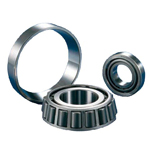
NACHI(FUJIKOSHI)
[Features]· Can be used in combination to withstand combined radial and axial load, and can also be used as a double row type.[Applications] Automotive transmission / automotive final reduction gear / vehicle wheels / axle for railway vehicles / other general use
Inner Dia. d(Ø) Outer Dia. D(Ø) Raceway Ring Shape Load Direction Width B(mm) Outer Ring Number of Raceway Ring Rows Inner/Outer Ring Material Specifications Outer Ring Type Precision (JIS) Rolling Element Material Size Standards 95 ~ 120 200 ~ 260 Cone Roller - 45 ~ 55 With Outer Ring Single Row Steel Standard Flat Class 0 Steel Metric System From: 3,900,162 VND Days to Ship: Số ngày giao hàng: 7 Day(s) or more  7 Day(s) or more
7 Day(s) or more
-
You can add up to 6 items per a category to the compare list.
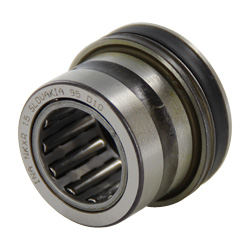
Combined Needle Roller Bearing NKXR
INA
Radial needle roller bearing with thrust bearing
Inner Dia. d(Ø) Outer Dia. D(Ø) Raceway Ring Shape Load Direction Width B(mm) Outer Ring Number of Raceway Ring Rows Inner/Outer Ring Material Specifications Outer Ring Type Precision (JIS) Rolling Element Material Size Standards 17 ~ 25 26 ~ 37 Complex Shape Roller Radial / Thrust 25 ~ 30 With Outer Ring Single Row Steel Standard / Dust Resistant With Semicircular Groove Class 0 Steel Metric System From: 974,779 VND Days to Ship: Số ngày giao hàng: 4 Day(s) or more  4 Day(s) or more
4 Day(s) or more
-
You can add up to 6 items per a category to the compare list.

Solid Type Needle Roller Bearing NK / RNA
JTEKT KOYO
The thick outer ring provides maximum load capacity and shock resistance with a relatively small radial cross section.
Inner Dia. d(Ø) Outer Dia. D(Ø) Raceway Ring Shape Load Direction Width B(mm) Outer Ring Number of Raceway Ring Rows Inner/Outer Ring Material Specifications Outer Ring Type Precision (JIS) Rolling Element Material Size Standards 12 ~ 80 19 ~ 95 Needle Roller Radial 13 ~ 30 - Single Row Steel Standard Flat Class 0 Steel Metric System From: 221,115 VND Days to Ship: Số ngày giao hàng: 6 Day(s) or more  6 Day(s) or more
6 Day(s) or more
-
You can add up to 6 items per a category to the compare list.
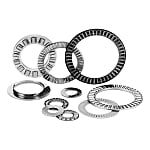
Thrust Bearings, Assemblies, Lathe
JTEKT KOYO
Needle rollers with small diameters are equally spaced by means of a cage, and purpose of these assemblies is to transmit a thrust load between two relatively rotating objects while greatly reducing friction. Thrust needle roller and cage assemblies also can be unitized with lipped washers which service as raceway surfaces for the needle rollers. Washers can be supplied separately or integrated with the needle roller and cage assembly.
Inner Dia. d(Ø) Outer Dia. D(Ø) Raceway Ring Shape Load Direction Width B(mm) Outer Ring Number of Raceway Ring Rows Inner/Outer Ring Material Specifications Outer Ring Type Precision (JIS) Rolling Element Material Size Standards 10 ~ 65 24 ~ 90 Needle Roller Thrust 1 ~ 3 - Single Row Steel Standard - - Steel Metric System From: 33,015 VND Days to Ship: Số ngày giao hàng: 4 Day(s) or more  4 Day(s) or more
4 Day(s) or more
| BrandNhãn hiệu |
|---|
| Product SeriesDòng sản phẩm |
| CADCAD |
| From |
| Days to ShipSố ngày giao hàng |
| Inner Dia. d(Ø) |
| Outer Dia. D(Ø) |
| Raceway Ring Shape |
| Load Direction |
| Width B(mm) |
| Outer Ring |
| Number of Raceway Ring Rows |
| Inner/Outer Ring Material |
| Specifications |
| Outer Ring Type |
| Precision (JIS) |
| Rolling Element Material |
| Size Standards |
You can add up to 6 items per a category to the compare list. | You can add up to 6 items per a category to the compare list. | You can add up to 6 items per a category to the compare list. | You can add up to 6 items per a category to the compare list. | |
| BrandNhãn hiệu | NACHI(FUJIKOSHI) | INA | JTEKT KOYO | JTEKT KOYO |
| Product SeriesDòng sản phẩm | ||||
| CADCAD |
| |||
| From | 3,900,162 VND | 974,779 VND | 221,115 VND | 33,015 VND |
| Days to ShipSố ngày giao hàng | 7 Day(s) or more | 4 Day(s) or more | 6 Day(s) or more | 4 Day(s) or more |
| Inner Dia. d(Ø) | 95 ~ 120 | 17 ~ 25 | 12 ~ 80 | 10 ~ 65 |
| Outer Dia. D(Ø) | 200 ~ 260 | 26 ~ 37 | 19 ~ 95 | 24 ~ 90 |
| Raceway Ring Shape | Cone Roller | Complex Shape Roller | Needle Roller | Needle Roller |
| Load Direction | - | Radial / Thrust | Radial | Thrust |
| Width B(mm) | 45 ~ 55 | 25 ~ 30 | 13 ~ 30 | 1 ~ 3 |
| Outer Ring | With Outer Ring | With Outer Ring | - | - |
| Number of Raceway Ring Rows | Single Row | Single Row | Single Row | Single Row |
| Inner/Outer Ring Material | Steel | Steel | Steel | Steel |
| Specifications | Standard | Standard / Dust Resistant | Standard | Standard |
| Outer Ring Type | Flat | With Semicircular Groove | Flat | - |
| Precision (JIS) | Class 0 | Class 0 | Class 0 | - |
| Rolling Element Material | Steel | Steel | Steel | Steel |
| Size Standards | Metric System | Metric System | Metric System | Metric System |
Loading...Tải…
ConfigureTạo
Specification/DimensionsĐặc điểm kỹ thuật / Kích thướcĐặc điểm kỹ thuật / Kích thước
-
Inner Dia. d(Ø)
- 3
- 4
- 5
- 6
- 7
- 8
- 9
- 10
- 12
- 12.7
- 13
- 14
- 14.288
- 15
- 16
- 17
- 17.462
- 18
- 19
- 19.05
- 20
- 21
- 21.430
- 21.986
- 22
- 22.225
- 24
- 25
- 25.4
- 26
- 28
- 29
- 30
- 31.75
- 32
- 34.925
- 34.925(1 3/8)
- 34.988
- 35
- 37
- 38
- 38.1
- 40
- 41.275
- 42
- 43
- 45
- 47
- 48
- 50
- 50.8
- 52
- 55
- 57
- 58
- 60
- 62
- 63
- 63.5
- 65
- 67
- 68
- 70
- 72
- 73
- 75
- 77
- 80
- 82
- 85
- 87
- 90
- 92
- 95
- 100
- 102
- 105
- 110
- 112
- 115
- 120
- 122
- 125
- 130
- 132
- 135
- 140
- 145
- 150
- 155
- 160
- 162
- 165
- 170
- 175
- 180
- 190
- 195
- 200
- 205
- 220
- 225
- 240
- 245
- 260
- 265
- 280
- 285
- 290
- 300
- 320
- 330
- 340
- 360
- 380
- 400
- 420
- 440
- 460
- 480
-
Outer Dia. D(Ø)
- 6
- 6.5
- 7
- 8
- 9
- 10
- 11
- 12
- 13
- 14
- 15
- 16
- 17
- 18
- 19
- 19.05
- 20
- 20.638
- 21
- 22
- 23
- 23.812
- 24
- 25
- 26
- 27
- 28
- 29
- 30
- 30.162
- 31
- 32
- 33
- 33.338
- 34
- 35
- 36
- 37
- 38
- 38.1
- 39
- 39.878
- 40
- 42
- 43
- 44
- 44.45
- 45
- 45.237
- 47
- 47.625(1 7/8)
- 48
- 49
- 50
- 50.005
- 50.292
- 52
- 53
- 54
- 55
- 56
- 57
- 58
- 59
- 59.131
- 59.974
- 60
- 61
- 62
- 63
- 64
- 65
- 65.088
- 66
- 66.5
- 67
- 68
- 70
- 71.5
- 72
- 73
- 73.025
- 74
- 75
- 76.2
- 77
- 78
- 80
- 81
- 82
- 83
- 85
- 86
- 88
- 89
- 90
- 92
- 93.264
- 95
- 98
- 100
- 102
- 105
- 108
- 110
- 112.712
- 115
- 117
- 120
- 125
- 127
- 130
- 135
- 137
- 140
- 145
- 150
- 153
- 155
- 160
- 165
- 170
- 173
- 175
- 178
- 180
- 188
- 190
- 200
- 210
- 215
- 220
- 225
- 230
- 240
- 250
- 260
- 270
- 280
- 290
- 300
- 310
- 320
- 340
- 360
- 370
- 380
- 400
- 420
- 440
- 460
- 480
- 500
- 520
- 540
- 560
- 580
- 600
- 620
- 650
- 680
- 700
-
Raceway Ring Shape
- Angular Contact Ball
- Cylindrical Roller
- Needle Roller
- Cone Roller
- Self-Aligning Roller
- Complex Shape Roller
- One-Way Clutch
-
Load Direction
- Radial
- Thrust
-
Width B(mm)
- 1
- 2
- 2.5
- 2.75
- 3
- 3.5
- 4
- 4.25
- 4.75
- 5
- 5.25
- 5.5
- 5.75
- 6
- 6.5
- 7
- 7.5
- 8
- 8.25
- 8.5
- 9
- 9.5
- 10
- 10.5
- 11
- 11.5
- 11.75
- 12
- 12.5
- 12.7
- 13
- 13.25
- 13.5
- 14
- 14.25
- 14.605
- 14.732
- 15
- 15.25
- 15.88
- 16
- 16.25
- 16.637
- 16.764
- 17
- 17.25
- 17.462
- 18
- 18.25
- 18.288
- 19
- 19.05
- 19.25
- 19.75
- 20
- 20.75
- 21
- 21.25
- 21.75
- 22
- 22.25
- 22.75
- 23
- 23.75
- 24
- 24.25
- 24.75
- 25
- 25.25
- 25.4
- 25.40(1)
- 25.650
- 25.654
- 26
- 26.25
- 26.75
- 27
- 27.25
- 28
- 28.25
- 28.75
- 29
- 29.25
- 29.75
- 30
- 30.162
- 30.302
- 30.5
- 31
- 31.5
- 31.75
- 32
- 32.5
- 32.75
- 33
- 33.25
- 33.5
- 34
- 34.5
- 35
- 35.25
- 36
- 37
- 38
- 38.25
- 38.5
- 39
- 40
- 41
- 42
- 42.25
- 42.5
- 43
- 43.5
- 43.75
- 44.5
- 45
- 45.5
- 45.75
- 46
- 46.5
- 47
- 48
- 48.5
- 49
- 49.5
- 50
- 51
- 51.5
- 52
- 53
- 53.5
- 54
- 54.5
- 55
- 56
- 57
- 58
- 59
- 59.5
- 60
- 60.5
- 61
- 61.5
- 62
- 63
- 63.5
- 63.75
- 64
- 65
- 67
- 67.5
- 67.75
- 68
- 69
- 70
- 71.5
- 71.75
- 72
- 73
- 74
- 75
- 76
- 77
- 77.5
- 78
- 79
- 80
- 81.5
- 82
- 83
- 84
- 84.5
- 85
- 86
- 87
- 88
- 89
- 90
- 90.5
- 91
- 92
- 93
- 95
- 96
- 97
- 98
- 98.75
- 100
- 102
- 103
- 104
- 106
- 107.75
- 108
- 109
- 110
- 112
- 114
- 115
- 118
- 120
- 121
- 122
- 126
- 127
- 128
- 130
- 132
- 133
- 134
- 135
- 137
- 138
- 140
- 144
- 145
- 146
- 148
- 150
- 155
- 157
- 160
- 163
- 165
- 174
- 175
- 176
- 190
- 192
- 200
- 208
-
Outer Ring
- With Outer Ring
- W/o Outer Ring
-
Number of Raceway Ring Rows
-
Inner/Outer Ring Material
- Steel
- Stainless Steel
-
Specifications
-
Outer Ring Type
-
Precision (JIS)
- Class 0
- Class 4
- Class 5
-
Rolling Element Material
-
Size Standards
Related Categories to Roller BearingsDanh mục liên quan đến Roller Bearings
FAQ Roller Bearings
- Question: What are the different types of roller bearings?
- Answer: The different types of roller bearings are:
1. Cylindrical Roller Bearings: Suitable for moderate-speed operations with high radial-load capacity and moderate thrust loads.
2. Spherical Roller Bearings: Designed to carry heavy axial and radial loads at high speeds, even with misalignment or shaft deflection. Available with cylindrical or tapered bores.
3. Needle Roller Bearings: Feature thin, long rollers for high radial load capacities in limited space and high-speed rotational applications.
4. Tapered Roller Bearings: Support radial and thrust loads, commonly used in automotive wheel hubs, gearboxes, and industrial equipment. Available in inch and metric sizes. These bearings find applications in various industries, including heavy equipment, machinery and manufacturing. - Question: What are the advantages of using roller bearings?
- Answer: Here are some Advantages of roller bearings:
1. Reduced friction for lower starting and running friction, except at very high speeds.
2. Ability to withstand momentary shock loads.
3. Accurate shaft alignment.
4. Low manufacturing cost.
5. Moderate lubricant requirements and low friction.
6. Capability to support both radial and axial loads.
7. Long bearing life.
8. Suitable for mass production with stable quality.
9. Can support combined radial and thrust loads simultaneously. - Question: How do I choose the right roller bearing for my application?
- Answer: Here are some steps to guide you in selecting the appropriate bearing:
1. Load Requirements: Understand the magnitude and direction of the load to determine the appropriate load capacity.
2. Speed: Consider the rotational speed of the application to ensure it aligns with the bearing's capabilities.
3. Environmental Conditions: Evaluate temperature, humidity, and exposure to contaminants to select a bearing that can withstand the operating environment.
4. Bearing Type: Choose from various types like cylindrical, spherical, needle, or tapered roller bearings based on load, speed, and operating conditions.
5. Bearing Material: Select suitable materials such as stainless steel, chrome steel, ceramic, or plastic, considering load, speed, temperature, and environmental factors.
6. Lubrication Needs: Determine lubrication requirements, including type, viscosity, and replenishment intervals, to ensure smooth operation and longevity.
7. Special Features or Requirements: Consider any specific features like seals, shields, precision tolerances, or coatings needed for your application. - Question: Can roller bearings handle axial loads?
- Answer: Yes, Roller bearings can indeed handle axial loads, though most are designed primarily for radial loads. Certain designs, such as cylindrical roller bearings with flanges on both inner and outer rings, and axial spherical roller bearings, are capable of supporting axial loads. However, roller bearings generally have lower axial load capacities compared to radial loads.
- Question: How do I maintain and lubricate roller bearings?
- Answer: The guidelines for maintaining and lubricating roller bearings effectively including
1. Selection of Lubricant: Choose lubricant based on application and environment, such as mineral oil, synthetic oil, or greases like lithium soap or polyalphaolefin.
2. Lubrication Techniques: Utilize methods such as oil drip feed or grease lubrication.
3. Lubrication Schedule: Establish a schedule based on application and environmental factors and regularly inspect bearings for wear and adjust the schedule accordingly.
4. Monitoring Performance: Regularly monitor for signs of issues such as increased vibration, excessive heat, lubricant loss, or contamination and address any problems promptly to prevent premature bearing failure. - Question: What are the signs of roller bearing failure?
- Answer: Signs of roller bearing failure include excessive vibration, increased temperature, noise, lubricant contamination, and friction. Initial indicators often begin with abnormal vibration, progressing to elevated temperature and noise. Contaminated lubricants exacerbate friction, leading to heat generation and eventual failure.
- Question: How long do roller bearings typically last?
- Answer: The lifespan of roller bearings is determined by factors like rotations or operating hours, with fatigue symptoms indicating failure. The L10 life, representing the hours or rotations before 90% of bearings fail, estimates bearing life. Ratings are based on hours at a set speed, influenced by load, speed, lubrication, and conditions. Average roller bearing life is usually 4 to 5 times the L10 life, potentially longer under favorable conditions.
- Question: Can roller bearings be used in extreme temperatures?
- Answer: Roller bearings have differing temperature thresholds depending on their design, lubrication, and operational conditions. Traditional bearings can typically function in temperatures up to 149°C, while specialized high-temperature bearings can endure temperatures up to 450°C. However, excessive heat can decrease efficiency, induce wear and expansion, and compromise seals or grease. It's vital to select appropriate bearings and lubricants tailored to specific applications and environmental conditions to ensure optimal performance and longevity.








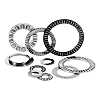
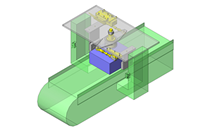




















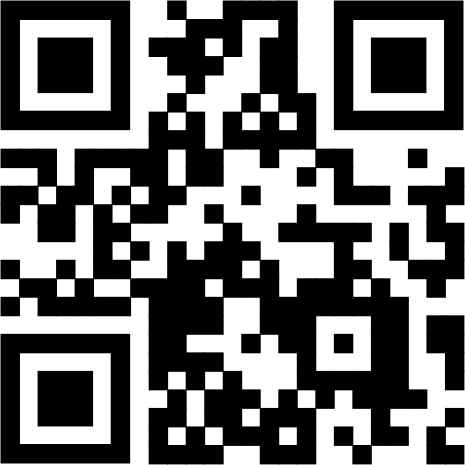

How can we improve?
How can we improve?
While we are not able to respond directly to comments submitted in this form, the information will be reviewed for future improvement.
Customer Privacy Policy
Thank you for your cooperation.
While we are not able to respond directly to comments submitted in this form, the information will be reviewed for future improvement.
Please use the inquiry form.
Customer Privacy Policy